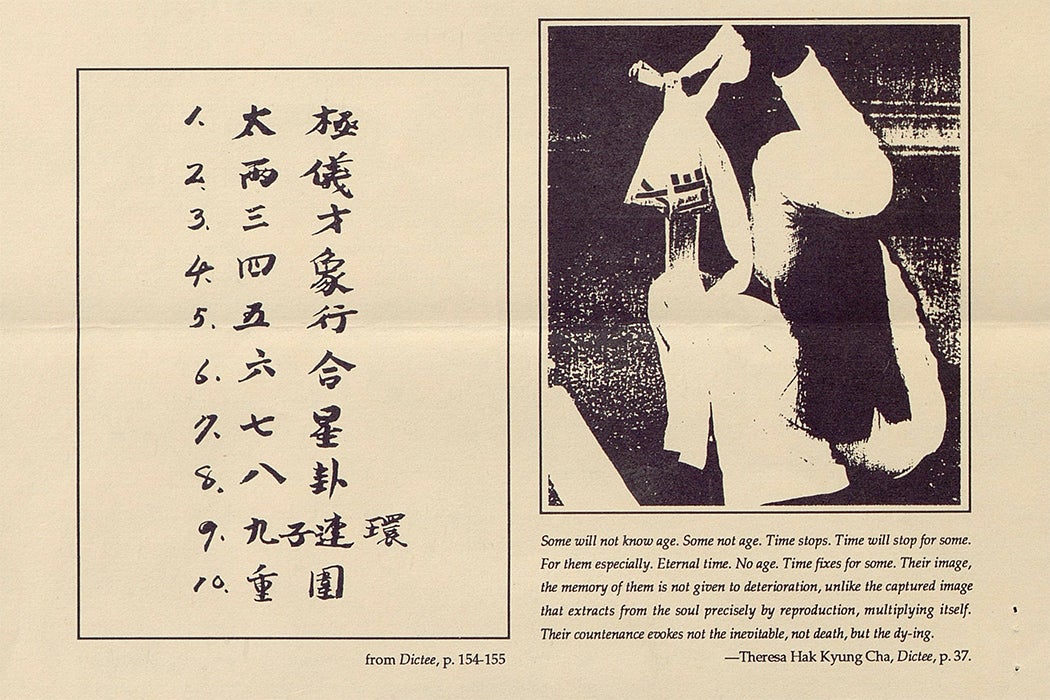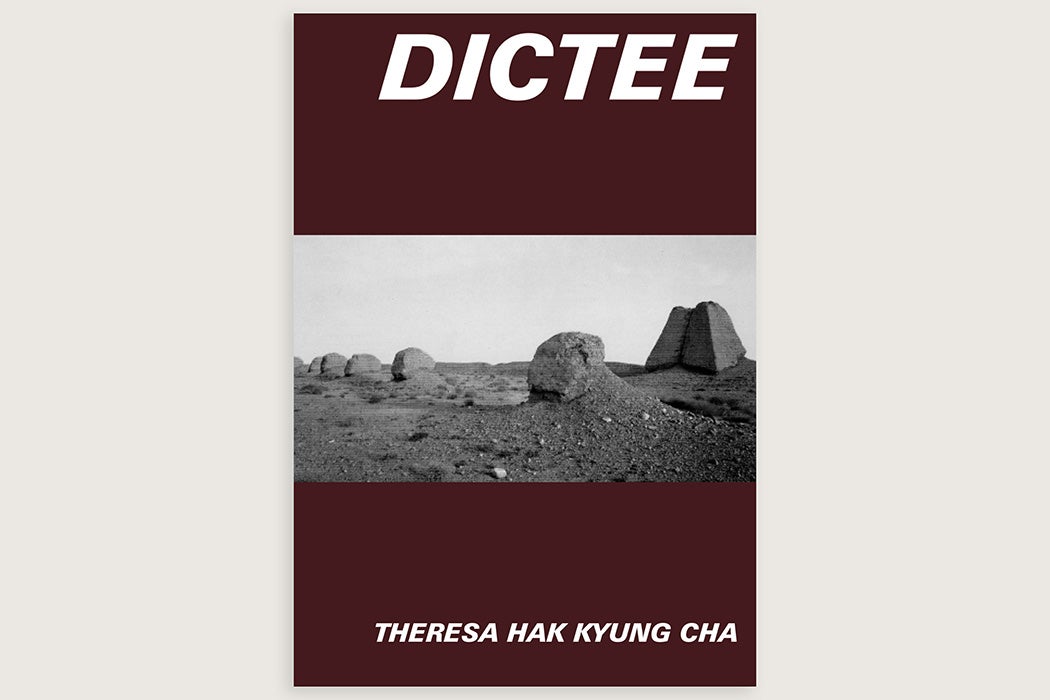Dictée, the 1982 masterpiece by Theresa Hak Kyung Cha, is a notoriously difficult read—a “complicated and genre-bending text,” in scholar Josephine Nock-Hee Park’s words. The deceptively simple story about a child and her mother unfolds over ten sections named for classical muses. Key to the narration is the prophetic and “shamanic” character of “the diseuse,” or a woman who recites, whom Park calls “the central figure of the book” and “a speaker for disparate voices.”
Written in a mix of English and French, Dictée straddles the line between the lyric and the epic, such that the text “plunges a revised lyric ‘I’ into a fractured epic journey,” Park argues.
That’s as the boundary between these two major genres of poetry is just one of the “many partitions that appear again and again in Cha’s text,” where the relationship between mother and daughter is “an intimate version of this national division” imposed between North and South Korea.

“Dictée shows us the fact of division in many different guises and never suggests that division is something to be transcended,” Park writes. The erasure of division isn’t the point, though.
“Cha does not imagine a world without such boundaries and in fact demonstrates that existence is itself founded on this divide,” Park explains. “She posits a figure at the cusp—herself a boundary—who must manage the transmission between different realms.”
Early on, Dictée presents questions about “what race generation / what house clan tribe stock strain / what lineage extraction / what breed sect gender denomination caste” is available to the speaker, but the only response the text offers is “Tertium Quid neither one thing nor the other.”
“The notion of this ‘third thing’ reveals that the exile remains trapped between two places,” Park explains, “hence the diseuse can only be this ‘tertium quid’ ‘from afar.’”
According to Park, the modern lyric poem typically uses “an evocation of a specific time and place” to illustrate a self “who struggles to recapture a single memory which evades her.”
“When Cha struggles to regain this memory, however, she marks a destabilization of this lyric self; she is no longer tied to a single moment, and her identity suffers as a result,” Park writes.
But “[p]erhaps Cha’s most startling revision of the lyric self in Dictée happens on a formal level: she casts this painfully embodied and fragmented figure within an epic frame.” Notably, Dictée opens with a haunting photograph of a Korean laborer’s cry for help etched into the walls of a mine during the Japanese occupation:
Mother
I miss you
I am hungry
I want to go home
Interpreting this image as a reference to Odysseus’s journey to the underworld, Park notes that “Cha has rewritten the lyric ‘I’ into a diseuse who is never a single self—and this diseuse conducts an epic descent in a complicated attempt to access a motherland and mother tongue…”
Weekly Newsletter
Cha, who was both a writer and a multimedia artist, was born in 1951 in Busan and moved to the United States with her family as a child. She was just 31 years old when she was brutally murdered in New York City in 1982, not long after the release of Dictée, her only book. Park observes that Dictée “was rescued from a decade-long obscurity” in 1994, when it became the subject of a collection of critical essays called Writing Self, Writing Nation, which cemented its reputation among scholars “as a complicated expression of Korean American identity.”
Ultimately, “[t]hrough its avant-garde strategies, Dictée weaves together different kinds of afflictions: individual somatic concerns, mythic plights, and political occupations,” she writes.
“It is my contention that Cha has created an aesthetic framework that is both rigorously ordered and flexible enough to delve into a single body and survey a historical landscape.”







